This incredible Enchilada Sauce is derived from our Red Taco Sauce recipe and is simply fantastic as an Enchilada Sauce. With a few other ingredients added in (Enchilada paste), to really transform this simple sauce. Use it with Cheesy Beef and Bean Burritos to make Enchiladas served with Rice. It can even be used over Hard or Soft Shell Tacos, various Rice dishes or Wraps. Anywhere you would use Red Taco Sauce.
This recipe offers a quick way to make enchilada sauce with enhanced flavor thanks to the addition of enchilada paste. It also includes ketchup, an uncommon ingredient, but it adds a surprising brightness and freshness to the sauce that works beautifully. This post also covers the key concepts behind understanding and making enchilada sauce.
What is Enchilada Sauce
Enchilada sauce is a flavorful, often spicy sauce traditionally used in Mexican cuisine to coat enchiladas. Which are tortillas filled with various ingredients like meat, cheese, or beans. This sauce is typically red or green, depending on the ingredients, and adds a tangy, savory, and some heat that can vary in spiciness.
Common Ingredients
- Red Enchilada Sauce: Made with dried red chili peppers (such as ancho or guajillo), tomatoes, garlic, onions, and spices like cumin and oregano. This version has a deep, earthy flavor.
- Green Enchilada Sauce: Uses green chilies (like jalapeños or poblanos), tomatillos, garlic, and cilantro for a fresher, tangier taste with a bit of heat.
How It’s Used
Pour the sauce over the stuffed tortillas before baking to help soften them and infuse them with flavor. You can also serve the sauce as a dip or drizzle it over dishes like burritos or tacos to boost their taste.
Enchilada Sauce Flavor Profile
The flavor profile of enchilada sauce is rich, savory, and slightly smoky with a balanced blend of earthy, spicy, and tangy notes. The specific flavor can vary depending on the ingredients used and the level of heat desired, but here are the main components:
- Smoky and Earthy
The use of dried chiles (like guajillo, ancho, or pasilla) provides a smoky and earthy flavor, which is characteristic of enchilada sauce.
Toasting the chiles before blending intensifies this smokiness and adds depth. - Tangy and Slightly Sweet
Tomatoes and/or tomato paste add a tangy base with a subtle sweetness, balancing the smokiness of the chiles.
Some recipes might include vinegar or lime juice to enhance the tanginess and acidity. - Savory and Spicy
Garlic, onions, and a mix of spices (such as cumin, oregano, and chili powder) contribute to the savory aspect of the sauce.
The heat level depends on the type and amount of chiles used, ranging from mild to hot. - Warm and Aromatic
Spices like cumin and oregano provide a warm, aromatic flavor that complements the smoky and tangy notes.
Some versions may also include warming spices like allspice, cinnamon or cloves for added warmth and complexity.
Mexican Holy Trinity Chilies
The Mexican Holy Trinity of Chilies typically refers to three popular dried chiles used frequently in Mexican cuisine for their depth of flavor and versatility: Ancho, Guajillo, Pasilla or Chiles de Arbol.
Chiles form the backbone of many traditional Mexican dishes, providing a combination of sweetness, smokiness, and heat that is essential to the cuisine’s flavor profiles. Many recipes use different chilies, swapping them out to achieve specific flavor characteristics.
Ancho Chile

Description: This is the dried form of the poblano pepper.
Flavor Profile: Mild heat with a sweet, fruity, and slightly smoky flavor, often with hints of raisins or prunes.
Uses: Commonly used in moles, enchilada sauces, and stews for its rich flavor and mild spice.
Guajillo Chile

Description: This dried chile comes from the mirasol pepper.
Flavor Profile: Mild to moderate heat with a tangy, sweet, and slightly smoky flavor, along with berry-like undertones.
Uses: Often used in salsas, marinades, and sauces, including the base for birria and adobo, due to its versatility and bright color.
Pasilla Chile

Description: The dried form of the chilaca pepper.
Flavor Profile: Mild heat with a rich, earthy, and somewhat smoky flavor, often with notes of chocolate and dried fruit.
Uses: Frequently used in moles, salsas, and soups for its depth and complexity.
Chili de Arbol

Description: The dried form of the Arbol pepper.
Flavor Profile: Medium to hot heat with a sharp, tangy, and slightly smoky flavor. Often described as having a nutty undertone, with hints of garlic and grassiness.
Uses: Commonly used in salsas, sauces, and as a garnish for soups or stews. It is also often used to make chili oils, marinades, and spice blends. Chiles de árbol add both heat and flavor to a variety of dishes, including tacos, enchiladas, and roasted meats.
How to Prepare dried Chilies
Preparing Chilies involves several steps to bring out their full flavor, soften them, and make them ready for use in sauces, marinades, or stews. Here’s how they are typically prepared:
- Cleaning and Removing Seeds
- Toasting
- Rehydrating/Soaking
- Blending
Cleaning and Removing Seeds
Stem Removal: Cut off the stems using a knife or scissors or snap the stems off.
Deseeding: Cut a slit down the side of each chile to open it up and remove the seeds and any inner membranes. This reduces bitterness and helps create a smoother texture in sauces.
Tip: Wear gloves if you’re sensitive to chile oils.
Toasting
Purpose: Toasting dried chiles brings out their smoky, earthy, and fruity flavors.
Method: Heat a skillet or comal over medium heat. Place the chiles in the hot pan, pressing them down gently with a spatula for a few seconds on each side until they become fragrant and slightly puffed. Avoid burning them, as this can result in bitterness.
Note: Toasting should only take 10–20 seconds per side.
Rehydrating (Soaking)
Purpose: Rehydrating the chiles softens them, making them easier to blend and incorporate into sauces.
Method: Place the toasted or untotasted chiles in a bowl and cover them with hot water (not boiling) for about 15–20 minutes, or until they become soft and pliable.
Drain and reserve some soaking water, as it can be used to adjust the consistency of the sauce or add extra flavor.
Blending into a Paste or Sauce
Method: Transfer the softened chiles to a blender or food processor. Add some soaking liquid, garlic, onions, and spices (like cumin, oregano, or cloves) depending on the recipe. Blend until smooth. If the mixture is too thick, add more soaking liquid or broth.
Straining (Optional): For a smoother texture, the blended mixture can be strained through a fine sieve to remove any remaining skin or seeds.
By following these steps: Cleaning, toasting, rehydrating, and blending, you maximize the flavors of Chiles, ensuring they enhance the dishes they are added to.
Enchilada sauce consistency
Enchilada sauce is typically medium in consistency, which allows it to coat well without being too runny or too thick. The goal is to have a sauce that spreads easily, but still clings.
Ideal Enchilada Sauce Consistency
Medium: The sauce should be thin enough to pour smoothly and coat the back of a spoon, but it shouldn’t be watery. It should have some body so that it adheres well to tortillas without soaking them excessively.
- Too thin and the Tortillas will soak up too much sauce. Causing them to go really soggy and potentially fall apart. As well as not clinging to the surface, which means less flavor, not as aestheic and pooling at the bottom of the tray.
- While too thick, and the sauce will create too much of a thick paste by drying out too fast and potentially burn. While certain section of a thick paste is very nice, you don’t want the whole casserole to be like this. Instead it should thick enough to adhere to the surface, but thin enough to bake into the Enchiladas.
Tips for Achieving the Right Enchilada Sauce Consistency
- Broth or Water: Use broth or water to adjust the consistency. Start with a smaller amount and gradually add more until you achieve the desired thickness.
- Simmering: Simmering the sauce for about 10–15 minutes helps it thicken and develop flavor. If it’s too thick, you can add more liquid. If it’s too thin, continue simmering to reduce it.
- Thickening Agents (Optional): Some recipes use a small amount of flour or masa harina to give the sauce more body. Whisk it in at the beginning to avoid clumps. If needing to thicken more while simmering, then combine flour or mada harina with an equal amount of water and mix before slowly pouring it into the sauce while mixing to thicken it.
Ultimately, enchilada sauce should have a pourable, smooth texture that coats tortillas nicely without making them soggy.
Mexican Method of making sauces
Sauces are typically cooked before being used. Cooking the sauce helps blend the flavors of the ingredients, deepen its taste, and thicken it to the desired consistency. Sometimes the sauce is strained for smoothness and other times not. Here’s how it’s usually done:
Cooking Process for Mexican Sauces
Sautéing Aromatics: In a pan, sauté onions and garlic in oil until they become soft and fragrant. This step develops the base flavor of the sauce.
Adding Spices: Add spices like cumin, oregano, chili powder, or even paprika and toast them briefly with the aromatics. Toasting the spices releases their essential oils and enhances their flavors.
Adding Tomatoes and Chiles: Add tomato paste, tomato sauce, or fresh tomatoes (depending on the recipe) along with rehydrated and blended chiles. Stir everything together to combine.
Simmering: Add broth or water to thin the sauce and bring it to a simmer. Cook for about 10–15 minutes, allowing the sauce to reduce slightly and for all the flavors to meld together.
Blending (Optional): Some people blend the sauce to create a smoother texture after it has cooked, while others blend the ingredients before cooking. Either way works, depending on the texture you prefer.
Cooking the sauce before using it ensures that the flavors are well-developed and that the sauce is the right consistency to enhance the dish.
Another often used method is to simply simmer everything and then blend it. Or bring water to a boil and pour over just the Chiles to cover and let sit until needed, skipping the toasting of the chiles. While everything else is cooked and added to the pot, starting with Onions and Garlic.
Quick Enchilada Sauce
This Quick Enchilada sauce is derived from the Red Taco Sauce and only exchanges the Tomato Juice & Cornstarch with 1/2 C Tomato Paste & 1 1/4 C Water with 1 Beef Bouillon Cube, that’s it! Other than that, it is prepared and cooked the same way. This is good for a quick and easy Enchilada sauce.
However, with the addition of an Enchilada Paste, we can elevate these flavors even more for an excellent more fuller and bodied Enchilada sauce.

Enchilada Sauce Ingredients
INGREDIENTS: Enchilada Sauce Base (Water, Beef Bouillon Cube, Tomato Paste, Taco Seasoning, Ketchup, Vinegar, Sugar (brown or white)), Enchilada Paste (Garlic, Chilies (Guajillo Chlies and optionally De Arbol for heat), Onion (White, Yellow or Red), Roma Tomatoes, Pimento Paste (Sweet or Hot for spicy), Oil.
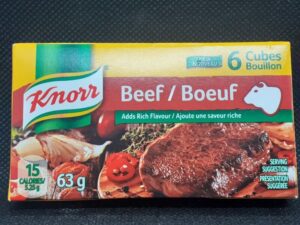
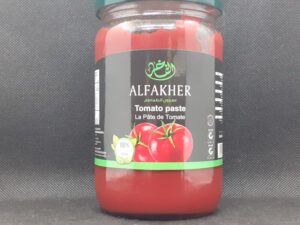


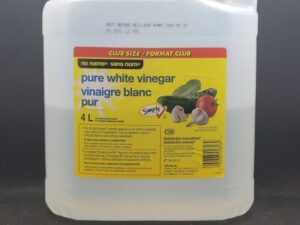
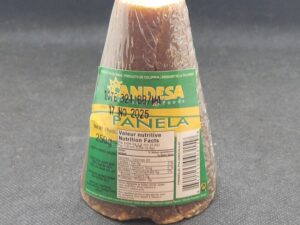
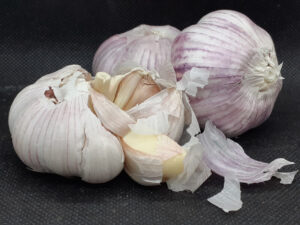

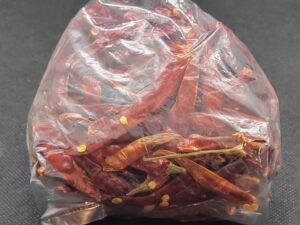

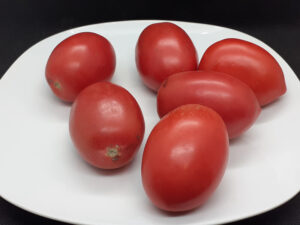
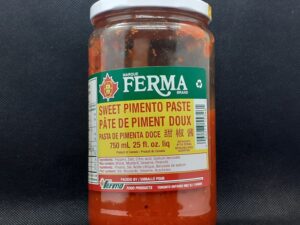

Enchilada Sauce Paste
This perhaps is the best I have made to date and builds upon the Quick Enchilada Sauce by pureeing 1 Onion, 3 Garlic Cloves, 1-2 Tomato and 1-3 soaked Guajillo Peppers with Pimento paste and Oil, added to the Quick Enchilada sauce for an incredible bright and fresh Enchilada sauce.
These added ingredients adds a fresh vibrancy to the sauce. As well as thickening it with the vegetable pulp that in my opinion cooks up very nicely with enchiladas. It is not thin where it gets absorbed in and not so thick that there is no transfer of flavor. It’s just right, allowing the sauce to coat the enchiladas without soaking into them and cooks up with nice sections of a thick paste, which to me is desirable. Use more water as needed to get the right consistency. Feel free to use other types or combination of Chilies.
How to make Enchilada Paste
Place into a glass jar the following and puree with an immersion blender. Empty into a pot with the remaining Enchilada ingredients (Red Taco Sauce) to bring to a boil. Feel free to use or combine different types of chilies for a desired outcome.

Enchilada Paste
- 1 Onion
- 1-2 Tomatoes
- 3 Garlic Cloves
- 1/4 C Pimento Paste
- 1 Tbl Oil
- 1-3 Soaked Guajillo Peppers or other Chilies such as Ancho or Pasilla or combinations
- Chiles de Arbol can be added for heat or the use of Hot Pimento paste
Red Pepper
Sweet Pimento Paste can be replaced with a 1/2 a Red Bell Pepper, whole Long Sweet Red Pepper or roasted peppers. Pimento paste is my preference and I usually have this on hand. But I have replaced it before with Roasted Red Pepper and the Long Sweet Red peppers just the same.
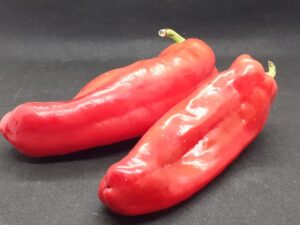

The Image below was made with Beef & Cheese Burritos and this Enchilada Sauce for Burrito Enchiladas. Served with a side of Taco Rice and is absolutely delicious! Simply incredible! Another rice side that is really good with these is the Adobo Sazon Rice.

Equipment
- 1 Sauce Pot
- 1 Immersion Blender
- 1 Glass Jar
Ingredients
Enchilada Paste
- 3 Cloves Garlic
- 1-3 Guajillo Chiles - Stem and seeds removed. Soaked in water until softened
- 1 Onion - Coarsely chopped
- 1-2 Tomatoes - Coarsely chopped
- 1/4 C Pimento Paste - Sweet or Hot for added heat
- 1 Tbl Neutral Oil
- 1-3 Chiles de arbol - Seeds removed. Based on heat preference or omit.
Enchilada Base Sauce
- 1 1/4 C Water
- 1 Cube Bouillon - Beef, Chicken, Pork, or Vegetable
- 1/2 C Tomato Paste
- 1 Tbl Taco Seasoning - or 1 tsp Oregano & Cumin, and Black Pepper to taste
- 1 Tbl Ketchup
- 1/2 Tbl White Vinegar - can use Lime or Lemon Juice, added to taste
- 1 tsp Sugar - Optional or more for sweeter
- To Taste Salt & Pepper
Instructions
- Remove the stem, seeds, and membrane from the Chiles. Place into a bowl of water for a few minutes while you prepare the Base Sauce & Enchilada Paste.
- Combine the base sauce ingredients in a Pot and set aside.
- In a glass jar wide enough to fit an immersion blender, add the Chopped Onion, Tomato, Garlic, strained out soaked Chilies, Pimento Paste and Oil. Blend until smooth and add to the pot with the base sauce.
- Mix well and often while bringing it to a boil. Reduce the heat and simmer for 5–10 minutes. Add more water if needed to adjust for the consistency you want, or reduce longer to thicken. Adjust the seasoning to your liking.

